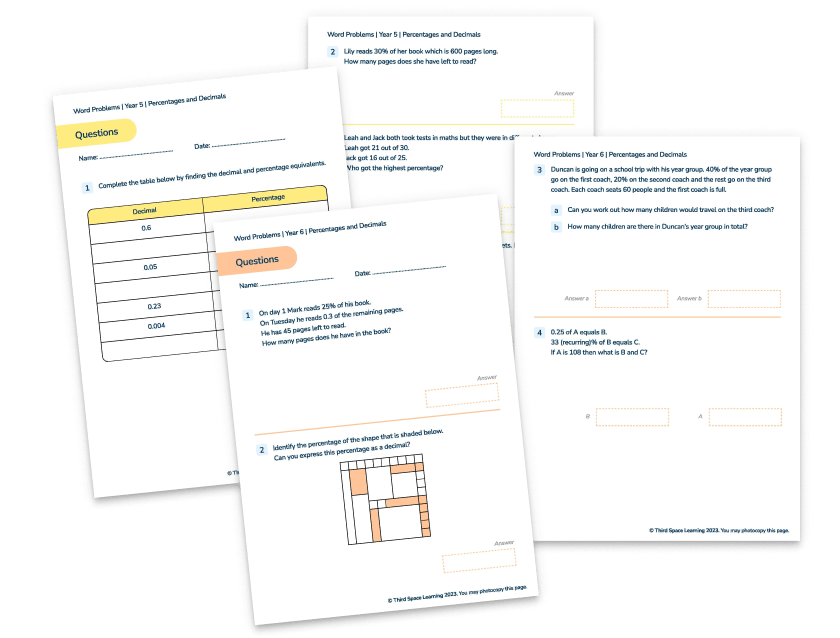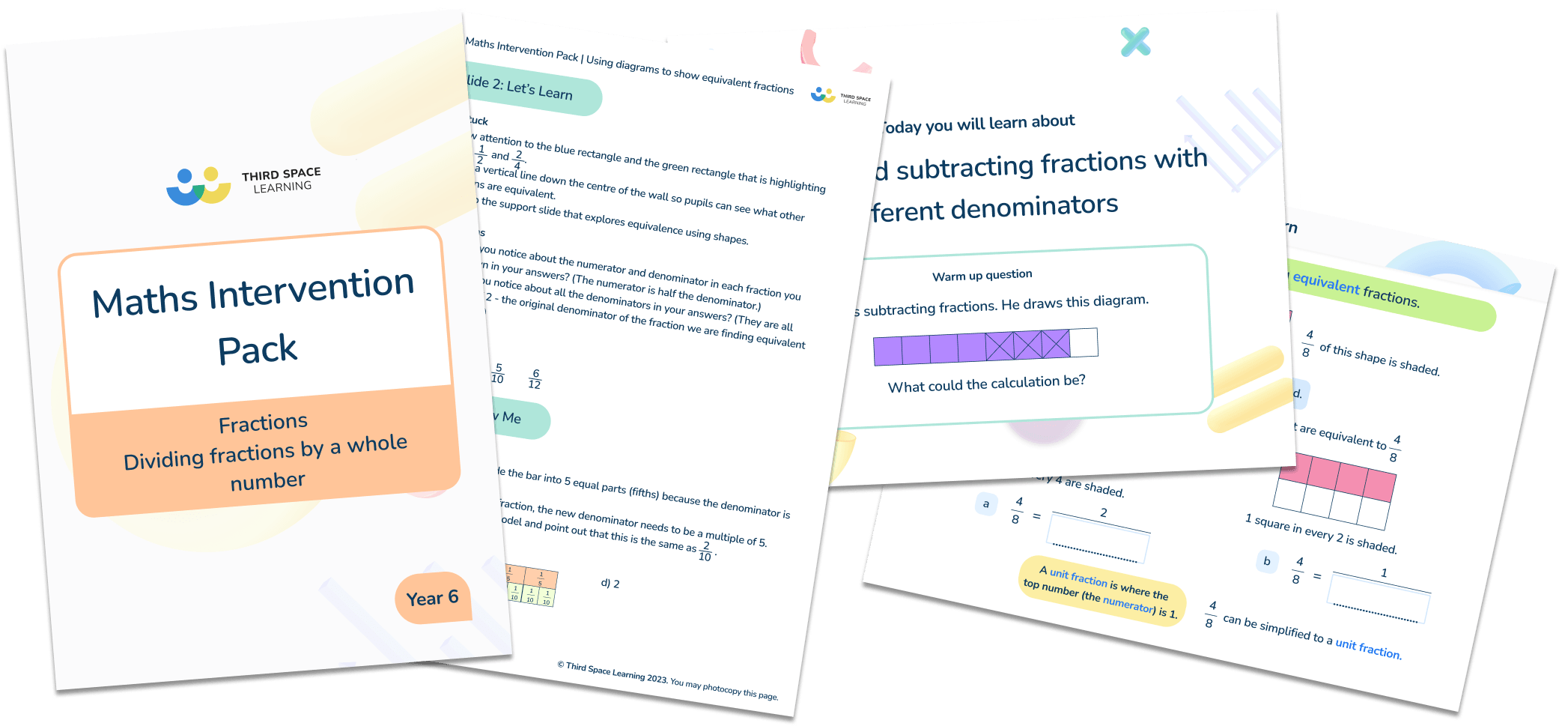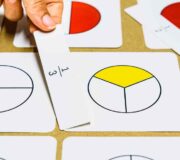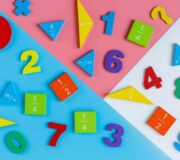How to Simplify Fractions: A Primary School Guide
Learning how to simplify fractions is a fundamental skill in maths, helping to make calculations and comparisons more manageable, particularly when working with larger, more complex numbers. The process involves reducing a fraction to its simplest form by dividing both the numerator and the denominator by their highest common factor.
Understanding how to simplify fractions can not only aid students in solving mathematical problems, but also provide a better grasp of real-life applications involving fractions. A solid understanding of simplifying fractions also enables students to progress to the more advanced mathematical concepts encountered in secondary school when comparing fractions. This article will show you how to simplify fractions, including worked examples and practice questions you can test your students with.
As students progress through primary school, they encounter fractions in various contexts. Basic equivalent fractions are first introduced in year 2 and this knowledge is then built upon over the following four years of primary school. Year 6 is the first time pupils are exposed to the concept of simplifying fractions.
Download Fractions Intervention Pack
Download these intervention lessons to help your students feel confident on fractions.
Download Free Now!Key takeaways
- Simplifying fractions makes calculations easier and provides a better real-life understanding of fractions.
- Students typically learn to simplify fractions in year 6, building a strong foundation for the more advanced maths encountered later on.
- Using a step-by-step approach to simplifying fractions ensures accuracy and mastery of this essential skill.
What are fractions?
Fractions are a way to represent parts of a whole. A fraction consists of a numerator (the top number) and a denominator (the bottom number), with the numerator representing the number of equal parts being considered, and the denominator indicating the total number of equal parts the whole is divided into.
A proper fraction occurs when the numerator is smaller than the denominator, representing less than one complete whole. For example, \frac{3}{4} is a proper fraction, as there are three equal parts being considered out of four possible equal parts.
An improper fraction occurs when the numerator is equal to or larger than the denominator. This represents a value greater than or equal to one whole. For instance, \frac{7}{5} is an improper fraction. These can also be expressed as mixed numbers, like 1 \frac{2}{5} .
Equivalence is an important concept in fractions and one which children are exposed to throughout Key Stage 2. Two fractions are considered equivalent if they represent the same value, even if they have different numerators and denominators.
To understand the concept of equivalent fractions, consider two fractions: \frac{2}{4} and \frac{1}{2} . Despite having different numerators and denominators, they both represent half of a whole.
To simplify fractions, the largest whole number that goes into both the numerator and the denominator with no remainder needs to be identified. For example, when simplifying 2/4, the largest whole number that goes into both numbers is 2. Dividing the numerator and denominator by 2 results in the simplified fraction \frac{1}{2} .

Unlimited primary maths tutoring with Skye, the voice-based AI maths tutor.
Built on the same principles, pedagogy and curriculum as our traditional tutoring but with more flexibility, reach and lower cost.
Join the schools already helping hundreds of primary pupils nationwide with Skye’s one to one maths tutoring
Watch Skye in actionUnderstanding how to simplify fractions
Simplifying fractions, also known as reducing fractions or expressing them in their lowest terms, is a crucial step in solving mathematical problems involving fractions. This process ensures that the fractions are easier to work with and compare.
Simplifying a fraction involves finding the highest common factor (HCF), sometimes known as the greatest common factor (GCF) or greatest common divisor (GCD) of the numerator and denominator, and then dividing both by this common factor.
To begin, identify and write down the factors of both the numerator and the denominator. Once you have the factors, you need to then identify the common factors (the factors which go into both the numerator and the denominator). Once these are listed, you can then establish the highest common factor, which is the highest number going into both the numerator and the denominator.
For example, consider the fraction \frac{6}{8} . Here, the common factors are 1 and 2, with 2 being the highest common factor.
Next, divide both the numerator and the denominator by the HCF. Continuing with the example of \frac{6}{8} , divide the numerator (6) and the denominator (8) by 2:
6 ÷ 2 = 3
8 ÷ 2 = 4
This results in the simplified fraction \frac{3}{4} , as both numbers cannot be further divided by any common factor.
The ability to simplify fractions is essential for tackling more advanced mathematical problems that involve fractions, as well as understanding the concept of common denominator, which plays a significant role in operations such as adding and subtracting fractions.
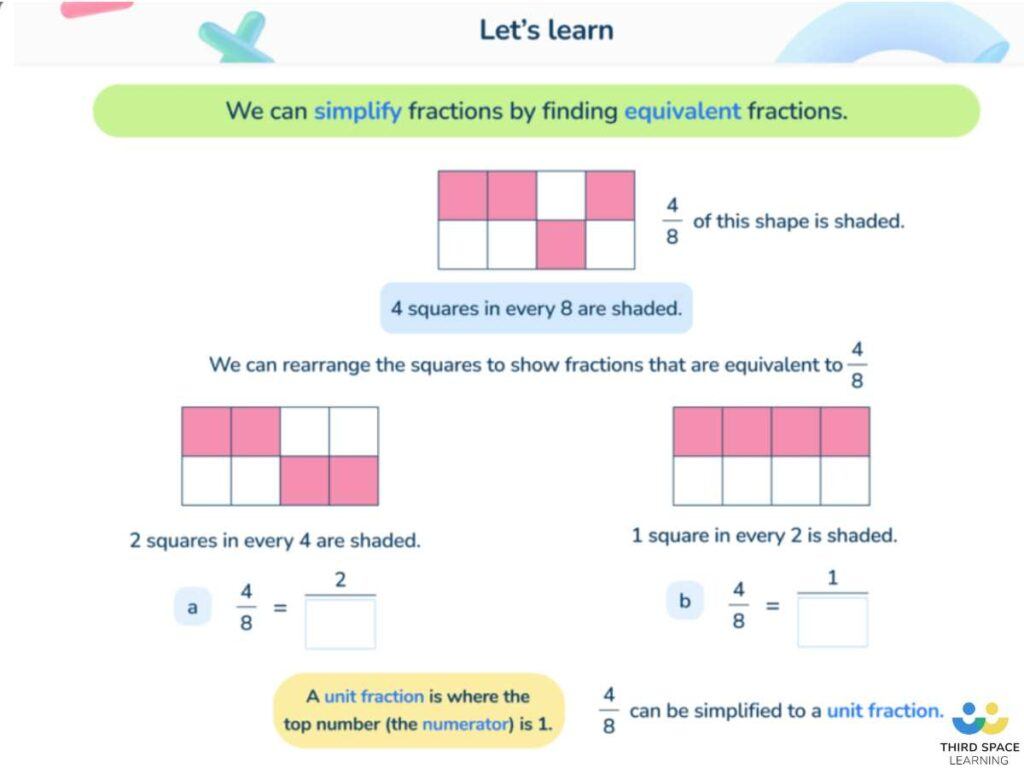
For example, consider the fraction \frac{6}{8} . Here, the common factors are 1, 2, and 6. Among these, 2 is the highest common factor.
Next, divide both the numerator and the denominator by the HCF. Continuing with the example of \frac{6}{8} , divide the numerator (6) and the denominator (8) by 2:
6 ÷ 2 = 3
8 ÷ 2 = 4
This results in the simplified fraction \frac{3}{4} , as both numbers cannot be further divided by any common factor.
To find the GCF or HCF, there are a few methods available, such as listing factors, using the Euclidean algorithm, or employing prime factorisation. Each approach has its benefits, depending on the given fraction, personal preference, and the available computational tools.
In the case of complex fractions or those involving large numbers, it can be more efficient to utilise the prime factorisation method. This involves breaking down each number into a product of prime numbers and comparing their occurrences.
For instance, consider the fraction \frac{45}{135} . The prime factorisation of 45 is 3^2 × 5 × 5, and that of 135 is 3^3 × 5 . The GCF, based on shared prime factors, is 3^2 × 5 or 45. Finally, dividing both the numerator and the denominator by 45 yields the simplified fraction \frac{1}{3} .
By following these steps and utilising the appropriate method, one can confidently simplify fractions and express them in their lowest terms. This foundation is essential for tackling more advanced mathematical problems that involve fractions, as well as understanding the concept of the common denominator, which plays a significant role in operations such as addition and subtraction of fractions.
When do pupils learn to simplify fractions?
Pupils don’t learn to simplify fractions until they reach year 6, but the building blocks for this begin to be developed as early as year 2 when children first meet the concept of equivalent fractions.
Children are introduced to fractions in year 1, building on this knowledge throughout their time in primary. In our article, Teaching Fractions KS2, we explain how the curriculum is designed for pupils from year 3 to year 6. As students progress through these stages, they gradually acquire a deeper understanding of fractions concepts.
In year 3, students are introduced to fundamental concepts such as identifying simple fractions, placing them on a number line, and understanding the significance of the numerator and denominator. At this stage, they start learning about comparing and ordering unit fractions and fractions with the same denominator.
By year 4, pupils are expected to develop their understanding of fractions even further. They are introduced to equivalent fractions. Fraction worksheets in this year often include exercises that challenge pupils to simplify fractions such as \frac{2}{4} or {6}{8} , encouraging them to find the largest common factor and divide the numerator and denominator accordingly.
Year 5 sees pupils delving deeper into fractions with more complex concepts. They explore the process of converting between mixed numbers and improper fractions, as well as learning about different types of fractions like decimal fractions and percentages. Students also begin learning how to multiply fractions and how to divide fractions, enabling them to solve more advanced problems.
Finally, in year 6, students become more adept at working with fractions in various contexts, such as solving problems involving lengths, measures, or ratios. They learn to simplify fractions further by multiplying or dividing numbers by a common factor and comparing quantities in everyday scenarios. This stage ensures that pupils are well-prepared to tackle advanced fractions during secondary education.
Step by step guide to simplifying fractions
Find the highest common factor
Begin by finding the highest common factor of the numerator and of the denominator. The HCF is the largest number that goes evenly into both numbers.
To find the HCF, list the factors for both the numerator and the denominator and identify the common factors in both lists. From this, identify which number is the largest to appear in both lists.
Example:
Fraction: \frac{16}{20}
- Factors of 16: 1, 2, 4, 8, 16
- Factors of 20: 1, 2, 4, 5, 10, 20
- Common factors: 1, 2, 4
- HCF: 4
Divide both the numerator and the denominator by the HCF
Once the HCF is found, divide both the numerator and the denominator of the fraction by the HCF. This will give you a new, simplified fraction.
Example:
Fraction: \frac{16}{20}
- HCF: 4
- New numerator: 16 ÷ 4 = 4
- New denominator: 20 ÷ 4 = 5
- Simplified fraction: \frac{4}{5}
Express the simplified fraction in its simplest form
After dividing by the HCF, express the simplified fraction in its simplest form, with the smallest possible numerator and denominator. To check that the fraction is in its simplest form, ensure that there are no more common factors between the numerator and the denominator other than 1.
Example:
Simplified fraction: \frac{4}{5}
- No more common factors between 4 and 5
- Simplest form: \frac{4}{5}
This step-by-step guide should help when teaching fractions to kids in an easy and understandable manner. Remember, practice makes perfect, and applying these steps to different fractions will improve understanding of simplifying fractions, as well as aid in tasks such as multiplying and dividing fractions.
How to simplify fractions: 3 worked examples
Simplifying fractions is an essential skill in mathematics, as it helps in comparing, adding, or subtracting fractions. Here are three worked examples to help you understand the process of simplifying fractions.
Example 1: Simplify \frac{8}{12}
To simplify this fraction, first find the highest common factor (HCF) for the numerator and the denominator. In this case, the HCF of 8 and 12 is 4. Now, divide both the numerator and the denominator by the HCF:
8 ÷ 4 = 2 12 ÷ 4 = 3
So, the simplified fraction is \frac{2}{3}
Example 2: Simplify \frac{15}{25}
As in the previous example, find the HCF for 15 and 25, which is 5. Then divide both the numerator and denominator by the HCF:
15 ÷ 5 = 3 25 ÷ 5 = 5
The simplified fraction is \frac{3}{5} .
Example 3: Simplify \frac{21}{49}
Determine the HCF for 21 and 49, which is 7. Divide both the numerator and denominator by the HCF:
21 ÷ 7 = 3 49 ÷ 7 = 7
The final answer is \frac{3}{7}
Remember that the goal of simplifying fractions or reducing fractions is to express them in their simplest form with equal parts. Simplification assists in various mathematical operations, such as multiplying and dividing fractions. Through these examples, you can gain a clear and confident understanding of the process involved in simplifying fractions.
How to simplify fractions: 5 practice questions and answers
Simplifying fractions involves reducing them to their simplest form, where the numerator and denominator have no common factors other than 1. The process of simplifying fractions can be easily mastered with some practice. Below are five practice questions and their answers to help you strengthen your skills in simplifying fractions.
Question 1: Simplify \frac{20}{45}
To simplify this fraction, first identify the highest common factor (HCF) of 20 and 45. The HCF is 5. Divide both the numerator and denominator by 5.
20 ÷ 5 = 4, 45 ÷ 5 = 9
So, the simplified fraction is \frac{4}{9} .
Question 2: Simplify \frac{30}{54}
Identify the HCF of 30 and 54, which is 6. Divide both the numerator and denominator by 6.
30 ÷ 6 = 5, 54 ÷ 6 = 9
The simplified fraction is \frac{5}{9} .
Question 3: Simplify \frac{28}{48}
The HCF of 28 and 48 is 4. Divide both the numerator and denominator by 4.
28 ÷ 4 = 7, 48 ÷ 4 = 12
The final answer is \frac{7}{12} .
Question 4: Simplify \frac{63}{81}
In this case, the HCF is 9. Divide both the numerator and denominator by 9.
63 ÷ 9 = 7, 81 ÷ 9 = 9
The reduced fraction is \frac{7}{9} .
Question 5: Simplify \frac{16}{24}
The HCF of 16 and 24 is 8. Divide both the numerator and denominator by 8.
16 ÷ 8 = 2, 24 ÷ 8 = 3
The simplified fraction is \frac{2}{3}
These examples highlight the importance of identifying the HCF and dividing both parts of the fraction to obtain the final answer. As you practise and gain confidence with these fractions examples, you will find that simplifying fractions becomes a more natural skill. Remember that ensuring the equal parts have been simplified as much as possible is crucial when reducing fractions.
Read more:
- What Is A Unit Fraction: Explained For Primary School
- What Is An Improper Fraction: Explained For Primary School
- How to Teach KS2 Fractions: Maths Bootcamp
Frequently asked questions
To simplify a fraction, follow these steps:
1. Find the highest common factor (HCF) of the numerator and denominator.
2. Divide both the numerator and denominator by the HCF.
3. Write the simplified fraction with the new numerator and denominator.
When multiplying fractions:
1. Multiply the numerators together, resulting in a new numerator.
2. Multiply the denominators together, resulting in a new denominator.
3. Simplify the resulting fraction by following the steps mentioned in the first question.
To simplify improper fractions, turn them into mixed fractions:
1. Divide the numerator by the denominator to determine the whole number.
2. Write any remainder as the numerator of a new fraction.
3. Place the new fraction over the same denominator as the original improper fraction.
4. Simplify the remaining fraction if possible.
In Key Stage 2, fraction simplification is taught through:
1. Introducing the concept of equivalent fractions.
2. Identifying the HCF and using it to simplify fractions.
3. Practising with a variety of fractions, from simple to more complex examples.
4. Utilising concrete resources, such as fraction cubes and circles, to help students understand the concept.
5. Introducing practical applications of fraction simplification in real-life situations. Using fraction games and fraction word problems in class can enable students to apply their knowledge to situations.
DO YOU HAVE STUDENTS WHO NEED MORE SUPPORT IN MATHS?
Skye – our AI maths tutor built by teachers – gives students personalised one-to-one lessons that address learning gaps and build confidence.
Since 2013 we’ve taught over 2 million hours of maths lessons to more than 170,000 students to help them become fluent, able mathematicians.
Explore our AI maths tutoring or find out about a primary school maths tutor for your school.
